Glebe's Social History
Sydney Female Mission Home
The girls may have ‘lapsed from virtue’ but the Sydney Female Mission Home in Glebe was there to help them back into a ‘decent position’. Rodney Hammett tells the story.
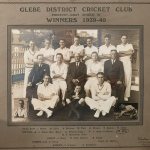
Glebe District Cricket Club 1939-1940
The men of the Glebe District Cricket Club smile at the camera as the photo is taken at Jubilee Park in 1940. Rod Hammett has been researching the life stories of some of these young men.
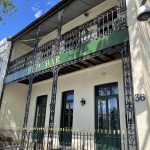
Dr Rudolph Bohrsmann and Racism
Simon Bohrsmann reflects on his family’s history in Glebe, in particular that of his great uncle Rudolph Bohrsmann, a respected doctor who set up a practice in Glebe in 1898. He was active in local politics and spoke out against poverty and poor housing. However, although born in Australia, he suffered from anti-German sentiment during World War which put an end to his political aspirations and led to him becoming ostracised
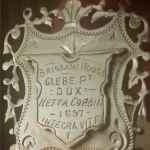
Brisbane House: kindergarten and girls’ high school, 1882-1918
The story of Brisbane House, a kindergarten and a girls’ boarding school in 365 Glebe Point Rd.

Glebe Point Rd a 100 years ago – spot the difference
Today, nearly half of the 130+ commercial premises in Glebe Point Road operate as cafés or restaurants, or did before their latest closure. A 100 years ago the picture was very different, with a wide variety of small businesses, traders, food shops and professional services catering to almost every need.
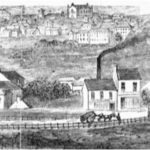
Flour Mills in Glebe Point Rd
James Pemell’s Steam Flour Mills operated on the corner of Glebe Point Road and Broadway in the late 1840s, The baking business flourished; two tons of flour were reportedly being baked each night.
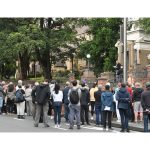
The impact of World Wars and the Depression on our society: Max Solling’s Anzac Day address 2022
Historian Max Solling’s thoughts on the impact of two World Wars and a Depression on the fabric of our society and on the government’s post-war reconstruction plans for remaking Australia.
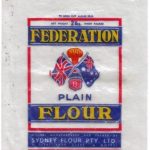
The story behind the packaging – ‘Sydney Flour’
1 Glebe Rd, Glebe, now the site of 279 Broadway, was the home of Federation Flour sold by Sydney Flour Pty Ltd. The site had been purchased by Adolph Frederick Brockhoff, and his sons Frederick and Charles in January 1906, and was next to the Presbyterian Church at the corner of Glebe Point Rd and Broadway. The building which the business occupied still exists today however the firm ceased business here in 1966.
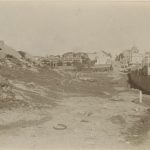
Glebe as a sporting area in the late 19th century
Glebe is home to one of the earliest rowing clubs, the Glebe Rowing Club, established in 1879. A decade later, the area where today’s Harold Park complex is located became a track for cycling, walking, athletics, pony racing and then trotting.

The forgotten famous of Glebe
We use their names every day. Glebe streets in the 19th and 20th centuries were frequently named after people, mostly men but occasionally women like Jane Harden, who were once important and well known locally and whose lives were significant at some time in the past.
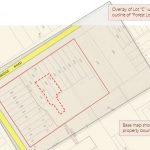
The Search for Forest Lodge
A chance discussion with Edwina Doe at the start of the COVID-19 lock-down in March 2020 left me with the question ‘where was the house – Forest Lodge?’ The NSW Office of Environment & Heritage in its discussion of the Hereford & Forest Lodge Heritage Conservation Area states (incorrectly, as it turns out), ‘The approximate […]
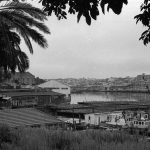
In 1969 Glebe had one Waterfront Park
This is the second of three articles by Glebe Society Environment Subcommittee Convenor, Asa Wahlquist, focusing on the natural environment of Glebe and Forest Lodge. In 1969 the only foreshore park in Glebe was Pope Paul VI Park, at the end of Glebe Point Rd. Very little of Glebe and Annandale was parkland: Glebe had […]
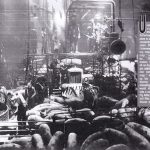
Where in Glebe did Mad Max get down and dirty in ‘Beyond Thunderdome’?
The Glebe Society frequently receives requests for information to assist people in their family history research or to better understand the history of their house. But, once in a while, a request of far-reaching significance comes in – such as this one from France-based Melvin about the location of the pig pen in Mad Max: Beyond Thunderdome. In this article, the Glebe Society, takes a deep dive into one of Australia’s most loved action movies – or should that be, a substantive contribution to genre of ‘unreal nihilist automotive dystopia’ films?

The Salvation Army in Forest Lodge 1885-2019, by Max Solling
The Salvation Army Hall at 9 Ross St is currently up for sale at a price believed to exceed $3 million Below is part of a talk that Max Solling gave to the Salvation Army on the Corps in its Hall on 13 September 1997. The evangelical revival sweeping late Victorian Britain left its mark […]
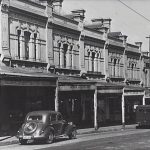
Glebe Chronology
A chronology of Glebe: major events, building construction and population, 1790 to the present.
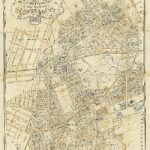
Digital Maps of Glebe and Forest Lodge, Late 1880s
There are three different digital maps of Forest Lodge and Glebe in the late 1880s.
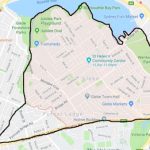
Why Forest Lodge Matters to the Glebe Society
This article addresses the question of why Forest Lodge is included in the Glebe Society’s area of operation. The current suburb boundary between them could be considered an administrative abstraction. This article takes a more historical approach, concluding that the history of the two suburbs is also at odds with the current suburban boundary between them.

First Inhabitants
Aboriginal people have an unbroken and ongoing connection with the City of Sydney. The original inhabitants of the Sydney city region are the Gadigal people. Despite the destructive impact of first contact, Gadigal culture survived. As the town of Sydney developed into a city, the Gadigal were joined by other Aboriginal people from elsewhere in New South Wales.
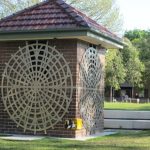
Glebe Firsts
This list includes achievements by people or groups from Glebe or Forest Lodge where these have been the first of their kind in Sydney, NSW, Australia or the world.
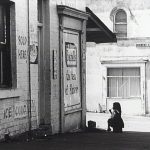
The Early Days of Glebe
In 1858, on his exploratory walks around Glebe, W S Jevons (who subsequently became a famous British economist) noted that the frontage to Parramatta Street was “…occupied by shops and public houses doing a large trade since they are the first and last which the traffic along Parramatta Street meets with.” Parramatta Street became known as Broadway in about 1890.
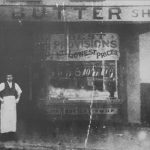
The Good Old, Bad Old Days
In November 1913, Mrs Annie Fairs of 17 Broughton St Glebe, gave evidence at an inquiry by the the Court of Industrial Arbitration of New South Wales into the cost of living and the living wage. Page by page the hardships of the working poor in Glebe just over 100 years ago are revealed.
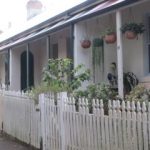
The Glebe Estate
The Glebe Estate comprises an intact community whose history goes back to the middle of the nineteenth century. So remarkable was the survival of a community so close to the centre of Sydney that it was purchased by the Federal Government to prevent the demolition of its buildings and the dispersal of its inhabitants.
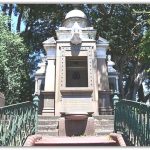
Conscription in Glebe
It’s true, we need reinforcements in the trenches. But if you knew the true horrors of this place, you would be just as unwilling as I am to force it upon any man. The truth is, I wouldn’t bring my worst bloody enemy over here to go through this.
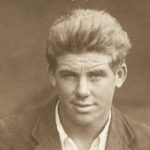
Glebe’s “Underbelly” Gangs
During the 1920s and 1930s Glebe streets, as those in other inner city suburbs, were the haunt of criminals fighting for control of illegal activities such as off-course betting and the sly grog trade.
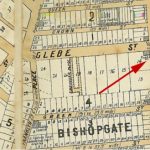
The Glebe Ragged School
From the 1860s there were schools set up in Sydney for destitute children in order to provide basic education and religious or moral instruction. These were the Ragged Schools.

Elsie – a Glebe Icon
Glebe has a long association with radical causes but none is as enduring and significant as the presence of Elsie Women’s Refuge in our midst.
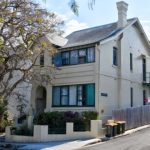
The Rainbow Lodge Program – A Quiet Achiever for Over 50 Years
The Rainbow Lodge Program was established in 1964 to provide supported accommodation for men on their release from NSW correctional facilities. It was located initially at Bass Hill but re-located to Dulwich Hill before moving to Glebe in 1971.

The Broadway
Grace Brothers were expanding in all directions, expelling the noxious trades. Joseph Grace opened a drapery at 5-7 Broadway in 1885 and a little later his brother Albert joined him in the business.
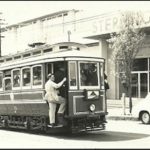
Glebe’s Trams
Until the late 1950s, Glebe Point Road boasted a thriving tram line. A small remnant of the tracks can be seen on Glebe Point Rd near the intersection with Marlborough St. On this page, you will find links to more information about trams on the Glebe Society website. The Past and Future Trams of […]
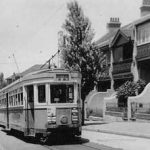
Rail Transport in Glebe
Whilst history was made in 2000 with the extension of the light rail system to Lilyfield, the suburbs of Glebe and Lilyfield were once served by an extensive government-owned tramway infrastructure.
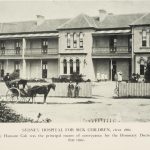
Sydney Hospital for Sick Children, Glebe 1880 – 1906
In 1878 Mrs W C Browne, wife of the Member for Singleton, gathered together a group of women to discuss the merits of establishing a children’s hospital in Sydney.
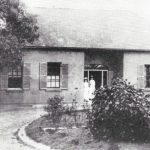
Diphtheria Cottage
The Glebe Sydney Hospital for Sick Children was established in 1880 in premises on the corner of Glebe Point Rd and Wigram Rd. Separate accommodation was usually built to house diphtheria patients. Kew Cottage across the road was secured despite community consternation.
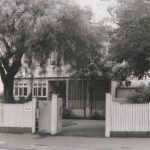
Glebe Care Homes for Children
From the earliest years of the colony of NSW, the large numbers of orphaned or abandoned children on the streets of Sydney resulted in various institutional ‘solutions’. In Glebe, the earliest recorded institutions dated from the 1880s, and some operated well into the twentieth century.
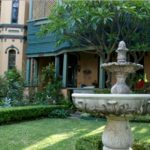
Glebe Care Homes – The Forgotten Ones
The Forgotten Ones – half a million lost childhoods This is an extract of an essay by Christine Kenneally.

Glebe’s First World War Memorials
Glebe has had four public war memorials erected since European settlement but there has only ever been recognition of the First World War on all of them.

The Wireless House
The Wireless House in Foley Park was originally built in 1934. It was provided by the local council as a meeting and entertainment place for the many unemployed, working class people of Glebe, few of whom could afford radios. It is thought to be the only building of its kind in Australia and possibly in the world.
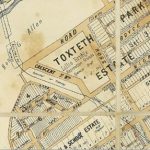
The Story of the Two Harold Parks
There have been two Harold Parks in Sydney and now there are none. The better known of the two was the racetrack sitting on the edge of Forest Lodge.

Wentworth Park – Its History and Uses
Near the end of 1879, as reclamation of Blackwattle Swamp neared completion, Glebe Council urged Henry Parkes to set apart a portion of the former swamp for “a cricket and quoit ground”. In December 1880 the trustees of the crown land invited competitive designs for the layout of 32 acres of the former swamp to become a park or place for public recreation to be named after patriot W.C.Wentworth.
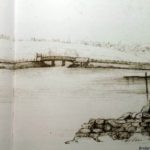
Wentworth Park – Plus ca Change …
Sybil Jack’s selection of newspaper extracts on the reclamation of Blackwattle Swamp during the 1870s shows community concern about alienation of public land and a push to retain land for recreational purposes.
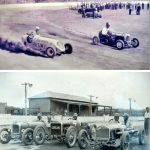
Wentworth Park Speedway
From 1928 until 1936, Wentworth Park was used as a speedway and was known as Wentworth Speedway.
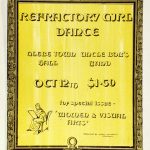
Ann Curthoys – Radical Glebe
Glebe of course has a huge radical history, with many different dimensions. Some of them are discussed in Terry Irving and Rowan Cahill’s book, Radical Sydney. They draw attention to working class Glebe politics and its role in major events such as the anti-conscription marches of 1916 and 1917, the General Strike of 1917, the Timber Workers’ Strike of 1929, the Unemployed Workers Union, and the controversial Youth Carnival for Peace and Friendship in March 1952.
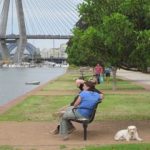
Glebe’s Waterfront History – the last 40 years
When Bob Carr came to one of the park functions in 1988 during the development of Bicentennial Park Stage 1, he likened our campaign for waterfront open space to the Wars of the Roses – Bob’s a history, not a movie, buff! He was, no doubt, conscious of the intrigue, conspiracy and mayhem conducted along the way to our gaining this wonderful park. If you appreciate these qualities in your drama, then the campaign for the Bicentennial Park is right for you.

Robert Darroch – The Birth of the Glebe Society
Robert Darroch, our inaugural Vice President, and Sandra Darroch, the inaugural Secretary, were guests at our Christmas Drinks in 2005 gathering. Robert has sent us this eye witness account of the Society’s beginnings.
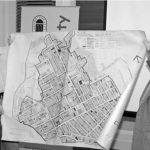
Tony Strachan – The Conservation Movement
The three really important issues of the time, from the late 60s to the early 70s were the expressways, what was going to happen to the Glebe Estate and the whole town planning issue.

The Glebe Society and the Battle of the Expressways
Although there were other issues, such as industrial pollution and unsympathetic architecture, that led to the founding of The Glebe Society it soon became clear that the greatest threat to the suburb was the proposal of the Department of Main Roads to build the expressways through Glebe.
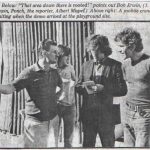
Interview with Albert Mispel about the Anti-Expressway Campaign (1970-1977)
In its early years members of the Glebe Society led a number of magnificently successful campaigns that had implications not just for Glebe but for the entire City. Some of them gained national and even international recognition.
One of the most outstanding campaigns was the one against Radial Expressways in the Inner City led by Albert Mispel.
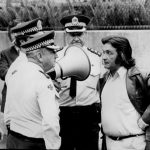
Jack Mundey, the NSW BLF and the Battle for Sydney
Jack Mundey was elected secretary of the NSW Branch in 1968; he came to play a very important part as a leader, not only in improving working conditions and wages for labourers in a very dangerous occupation, but also in helping local resident action groups preserve their environment against the plans of property developers.
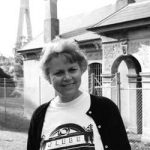
Marianne von Knobelsdorff – Memories of a True Glebian
Even though Marianne von Knobelsdorff was born in Germany, her heart is in Glebe. During the 29 years since she arrived here, she has been an indefatigable worker for The Glebe Society and has participated in most of the major campaigns that have been waged to preserve and improve our suburb.
As most members know, Marianne is returning to Germany to care for her sick mother, but has retained her flat in Leichhardt Street in the hope that she may return one day.
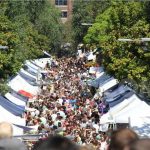
The First Glebe Street Fair
The first Fair that involved the closure of Glebe Point Rd took place on Saturday, September 22 in 1984. The participants were almost entirely from the Glebe community, including many businesses. There was music, dancing and activities for children.








